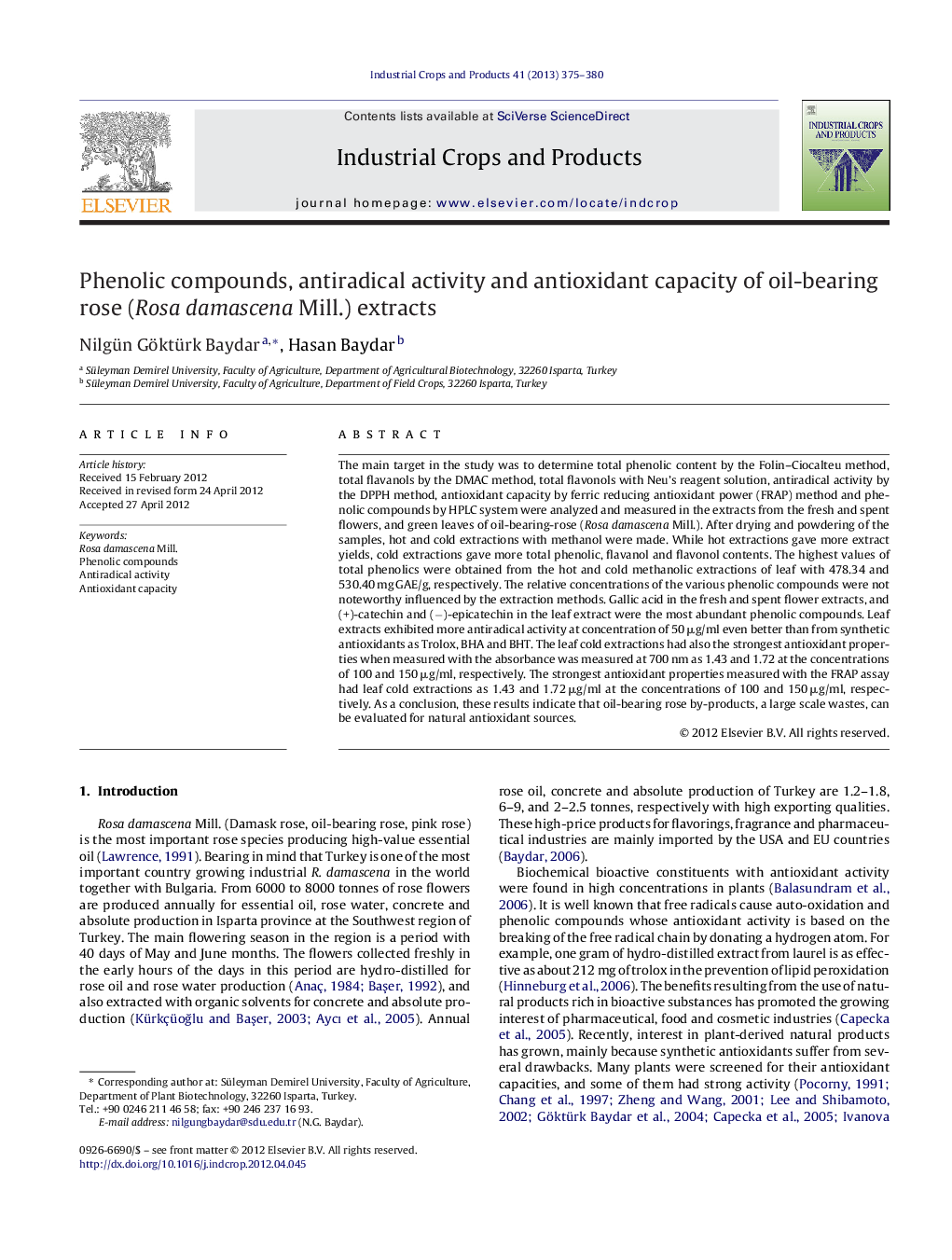| Article ID | Journal | Published Year | Pages | File Type |
|---|---|---|---|---|
| 4513935 | Industrial Crops and Products | 2013 | 6 Pages |
The main target in the study was to determine total phenolic content by the Folin–Ciocalteu method, total flavanols by the DMAC method, total flavonols with Neu's reagent solution, antiradical activity by the DPPH method, antioxidant capacity by ferric reducing antioxidant power (FRAP) method and phenolic compounds by HPLC system were analyzed and measured in the extracts from the fresh and spent flowers, and green leaves of oil-bearing-rose (Rosa damascena Mill.). After drying and powdering of the samples, hot and cold extractions with methanol were made. While hot extractions gave more extract yields, cold extractions gave more total phenolic, flavanol and flavonol contents. The highest values of total phenolics were obtained from the hot and cold methanolic extractions of leaf with 478.34 and 530.40 mg GAE/g, respectively. The relative concentrations of the various phenolic compounds were not noteworthy influenced by the extraction methods. Gallic acid in the fresh and spent flower extracts, and (+)-catechin and (−)-epicatechin in the leaf extract were the most abundant phenolic compounds. Leaf extracts exhibited more antiradical activity at concentration of 50 μg/ml even better than from synthetic antioxidants as Trolox, BHA and BHT. The leaf cold extractions had also the strongest antioxidant properties when measured with the absorbance was measured at 700 nm as 1.43 and 1.72 at the concentrations of 100 and 150 μg/ml, respectively. The strongest antioxidant properties measured with the FRAP assay had leaf cold extractions as 1.43 and 1.72 μg/ml at the concentrations of 100 and 150 μg/ml, respectively. As a conclusion, these results indicate that oil-bearing rose by-products, a large scale wastes, can be evaluated for natural antioxidant sources.
► Fresh and spent flowers and leaf extracts of oil-bearing-rose tested for their phenolic compounds, antiradical and antioxidant activities. ► Gallic acid in the flower extracts, (+)-catechin and (−)-epicatechin in the leaf extract were the most abundant phenolic compounds. ► Leaf extracts exhibited more antiradical activity at concentration of 50 μg/ml even better than from synthetic antioxidants. ► Leaf extracts showed more antioxidant activity with the FRAP assay than the flower extracts. ► Oil-bearing rose by-products, a large scale wastes, can be evaluated for natural antioxidant sources.
